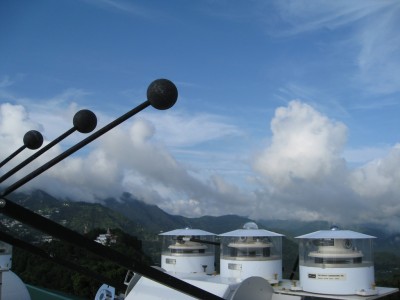
From June 2011 through March 2012, AMF1 was in Nainital, India, gathering data for the Ganges Valley Aerosol Experiment (GVAX), led by principal investigator Rao Kotamarthi. Preliminary results from the campaign indicate that aerosol distribution could be much more localized than previously believed. Read the ARM feature article for a summary of the GVAX campaign.
Led by principal investigator Chuck Long, the ARM Madden-Julian Oscillation Experiment (AMIE) was AMF2’s first non-U.S. deployment, taking place from October 2011 through March 2012. This campaign also involved the Tropical Western Pacific site of Manus Island, Papua New Guinea. Data gathered at these two facilities will allow studies of the initiation, propagation, and evolution of convective clouds within the framework of the MJO. Read the ARM feature article for a summary of AMIE.
The AMF1 will participate in the Two-Column Aerosol Project (TCAP), a field campaign beginning in July 2012 and running through June 2013 being conducted by principal investigator Larry Berg. Ground-based measurements gathered at Cape Cod National Seashore will provide aerosol, radiation, and cloud data, while aircraft will join the project for two intensive operational periods in July 2012 and February 2013. ARM’s new Mobile Aerosol Observing system will operate during aircraft operations, with specialized instruments that measure the composition of aerosols and gas chemistry.
In October 2012, AMF2 will begin a year-long campaign and make approximately 25 round trips on a container ship between Los Angeles and Hawaii. Led by principal investigator Ernie Lewis, the Marine ARM GPCI Investigation of Clouds (MAGIC) field campaign aims to improve the representation of the stratocumulus-to-cumulus transition in climate models.
This work was supported by the U.S. Department of Energy’s Office of Science, through the Biological and Environmental Research program as part of the Atmospheric System Research program.

